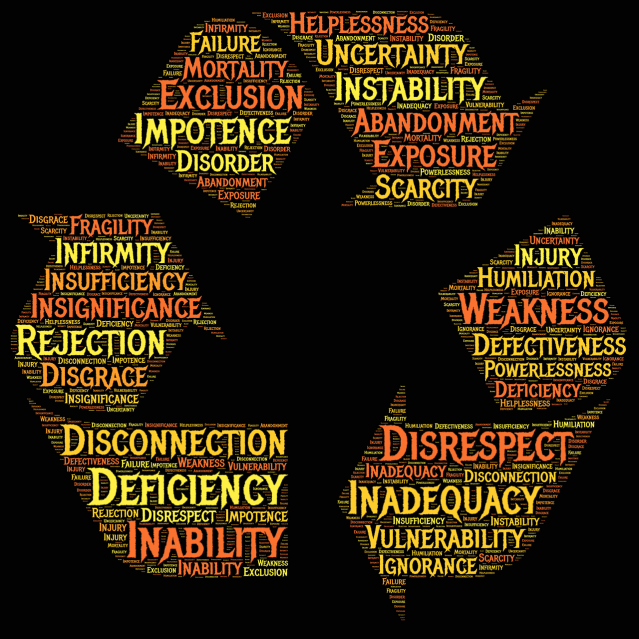Health
What Motivates People to Make Healthier Lifestyle Choices?
Positive health messages are more inspiring than fear-based messaging.
Posted January 30, 2015

Did you make any New Year’s resolutions? If you are like millions of Americans, odds are that you have already broken your resolutions. What is the secret to making resolutions and healthier lifestyle choices that stick?
A Cornell University study released yesterday offers new insights that can help you create a personalized inner-dialogue and messaging strategy that will motivate you to make healthier lifestyle choices every day.
The new study, “When Do Gain-Framed Health Messages Work Better Than Fear Appeals?” was published in the journal Nutrition Reviews. This study was co-authored by Brian Wansink from the Dyson School of Applied Economics and Management at Cornell University and Lizzy Pope, who is now with the Nutrition and Food Sciences Department at University of Vermont.
The Cornell researchers found that health experts tend to prefer negative messages—but the general public responds better to positive health messages. When policy makers and public health experts create messages they are generally more inclined to use negative messaging such as, “Drink, Drive, and Die” or “Don’t Drink Yourself Fat.”
Positive health messages are commonly classified as “gain-framed” because they are based on gaining something positive as the result of your actions. For example, “Eat broccoli and you’ll live longer" would be “gain-framed." Saying, “Don’t eat broccoli and you’ll die sooner," would be a negative “loss-based” message.

The researchers at Cornell found that the general public tends to be more motivated by positive things they can do to prevent health problems than by fear-based messaging. Hopeful messages that highlight the bright-side are inspiring. Messages that dwell on the potential despair caused by unhealthy lifestyle choices don't motivate you to seize the day.
That said, the framing of any health message is often a combination that intertwines the pros and cons of a lifestyle decision in a way that includes both gains and losses. Loss-based messages usually involve losing something positive . . . but they can also reference losing something negative.
Scare Tactics Often Backfire
Unfortunately, many of the negative public health messaging can be offensive and insulting to the target audience. Personally, I have been offended by a lot of the messaging surrounding the “obesity epidemic."
In an attempt to motivate people to exercise more and eat less, some campaigns have shamed people who are overweight into feeling “less-than” because of their BMI. This is wrong. And, it is unproductive.
One of the worst offenders was a "stop childhood obesity" campaign with black-and-white images of overweight children with tag lines such as: "Warning: It's hard to be a little girl when you're not" and "Fat kids become fat adults." This campaign is a perfect example of how negative messaging can backfire.
One of the best examples of a gain-framed campaign to inspire young people to be more active was called Find Your Greatness. In the video, you see a young jogger running towards the camera down the middle of a long country road. The protagonist in the ad doesn’t have a typical “runner’s body.”
As he moves closer towards the camera, there is voice-over narrative that breaks stereotypes of “greatness” by stating that greatness is egalitarian and universally accessible to people from all walks of life and shapes and sizes. I find the message incredibly inspiring. Do you?
On the flip side, I had mixed feeling about Mayor Bloomberg’s “Are You Pouring on the Pounds?” campaign that was aimed at reducing consumption of sugary drinks. The PSA video of this man guzzling the equivalent of a lard Slurpee is disgusting, but it is also kind of effective. What do you think?
The New York City PSA is a perfect example of the thin line between a negative health message being effective in dissuading an unhealthy behavior or backfiring. How do you respond to watching this video? Does it make you want to reach for the seltzer water instead of a soda?
An April 2014 study from the American Psychological Association (APA) reported that students who felt threatened by a teachers' messages which frequently focused on the fear of failure were less motivated—and had lower scores—than students who said their teachers didn’t use scare tactics.
A message such as, "If you fail the exam, you will never be able to get a good job or go to college. You need to work hard in order to avoid failure," was an example of trying to motivate students using fear.

When is it better to be positive or negative?
In their content analysis of 63 nutrition education studies, the researchers at Cornell discovered four key questions which can help predict which type of health message will work best for a particular target audience. I have adapted their findings to help you identify what type of messaging might work best for you.
- Are you highly involved in this issue?
- Are you detail-oriented?
- Are you risk averse?
- Is the outcome uncertain?
The more questions you answered with a "Yes," the more likely it is that a negative- or loss-based health message or inner-dialogue framework will work best for you.
When trying to motivate yourself to make lifestyle changes I would recommend taking a multi-pronged approach that includes mostly gain-framed “hopeful” motivations but also “fearful” loss-based deterrents when appropriate.
Take inventory of what inspires you to take action with each specific habit you are trying to change. Also, I have found that motivations can change from day-to-day. Some days a negative inner dialogue might inspire you to exercise or avoid eating junk food... Positive self-talk is not always the anecdote. Be creative when fine-tuning and selecting the wellness messages that inspire you to take action and stay healthy.
Conclusion: The "carrot" is usually a better motivator than the "stick."
Unhealthy lifestyle choices lead to the majority of deaths in the United States. A study by Matthew Reeves, a Michigan State University epidemiologist, found that only 3% of Americans maintain a healthy lifestyle.
The four keys to healthy living include: not smoking, maintaining healthy weight, eating a variety of fruits and vegetables every day, and exercising for at least 30 minutes most days of the week. How would you rate yourself on these four?
When coaching yourself, or someone you care about, to make healthier lifestyle choices the outcome will be better if the message is positive and hopeful.
Negative reinforcement or evoking fear is much less effective than reminding yourself—and the people you love—that changing any unhealthy behavior will have infinite positive consequences that include staying alive.
If you'd like to read more on this topic, check out my Psychology Today blog posts:
- “Five Lifestyle Choices That Can Help You Live Longer”
- “8 Ways Exercise Can Help Your Child Do Better In School”
- "4 Lifestyle Choices That Will Keep You Young"
- "Maintaining Healthy Social Connections Improves Well-Being"
- "Why Is Listening to Your Favorite Music Good For Your Heart?"
- "Cortisol: Why 'The Stress Hormone' Is Public Enemy No. 1"
- "New Dietary Rules: 'Low-Fat" Is Out, Olive Oil Is In"
- "Physical Activity Improves Cognitive Function"
- "What Daily Habit Can Boost “Healthy Aging” Odds Sevenfold?”
Follow me on Twitter @ckbergland for updates on The Athlete’s Way blog posts.
Photo Credits: All images from Pixabay (no attribution required.)




